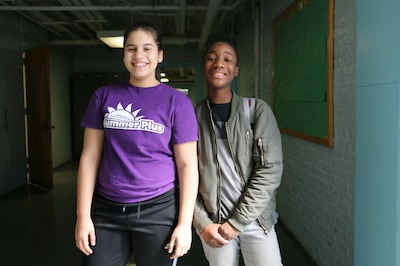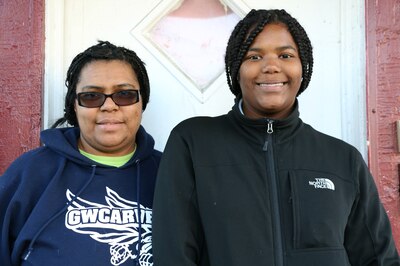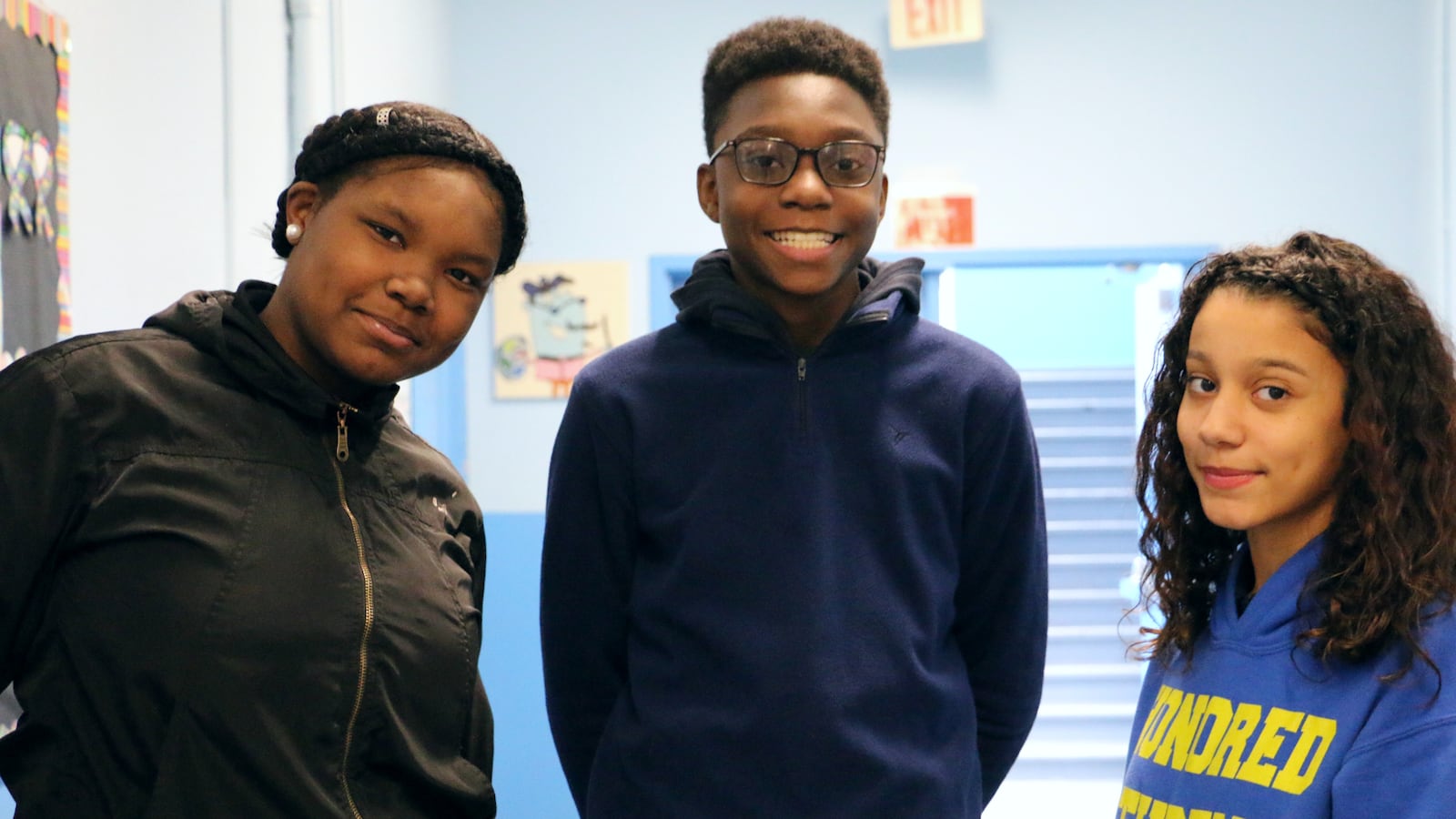Keyon Lambert waited a long time for April 20th to arrive — the day when he and hundreds of other Newark students are discovering which high schools they’ve been matched with.
Long before this day, Keyon, an eighth-grader at Brick Avon Academy in the South Ward, spent hours poring over the test scores, class offerings, and graduation rates of the city’s high schools. As he awaited the results this week, he explained why he had invested so much time and thought into his application.
“If I went to a bad high school and got distracted — time flies by,” he said. “Senior year, I [might not] even know what I want to be, what college I want to go to. I probably miss out on a whole bunch of stuff. I’d probably be a dope by then.”
“But if I go to a good school,” he added, “I’ll be able to get my education and focus on the other things. Nothing, basically, will distract me.”
Newark students can apply to as many as eight high schools — traditional, magnet, or charter — through the district’s universal online application, and to the county-run vocational schools through a separate application. While the city has long offered competitive magnet schools alongside its traditional “comprehensive” high schools, the online system has made it easier for students to apply to multiple schools.
Still, each student only gets one match. And, as Keyon understood, some options are better than others. That leads many students to compete for the limited seats at the most selective schools, whose enrollments often do not match the overall demographic makeup of the district — a trend the school board has been probing.
Chalkbeat spoke to more than a dozen eighth-graders this week as high-school match day approached to understand their decisions. We’ll be checking back with some of them after they receive their matches Friday.
“There’s going to be a lot of tears,” said Jahida Gilbert, another Brick Avon eighth-grader, earlier this week.
The district’s six magnet high schools, which admit students based on their academic records or artistic talent, are by far the most popular option — and the most exclusive. Last year, more than two-thirds of incoming ninth-graders ranked a magnet school first on their applications, according to a new report on the city’s enrollment system. But just 31 percent of students across all grades who rank magnets first are actually admitted, and only 24 percent of Newark high schoolers wind up attending one of the coveted schools.
At the other end of the spectrum are the district’s eight comprehensive high schools. Unlike magnets, they cannot weed out students with low scores or poor attendance — they must admit anyone they have room for, or use a random lottery if they are oversubscribed. Partly as a result, they tend to serve far more students with disabilities, have many more students who are chronically absent, and post much lower test scores.

About 10 percent of Newark students opt into one of the four technical-vocational schools run by Essex County, where they can join peers from other towns and study trades ranging from culinary arts to engineering while also earning a high-school diploma. Like the magnets, the “vo-tech” schools screen applicants. They look at students’ grades, test scores, disciplinary and attendance records, and the results of an entrance essay and interview.
Keyon ruled out the comprehensive high schools. But he did go for an interview at a vocational school, where the interviewer tried to assess Keyon’s personality by asking whether he’d rather be a lion or a bear. “I picked a lion because you could set a good example for others,” he explained.
He also explored a third category — charter high schools. Publicly funded but independently operated, those schools cannot screen applicants. However, several are affiliated with lower-grade charter schools that act as feeder schools, leaving few spots for other incoming ninth-graders. The charter high school Keyon applied to, Great Oaks Legacy, which includes pre-kindergarten to 12th-grade, reported having no available seats for students entering ninth-grade last year.
During his search, Keyon consulted his parents, who told him: “Be mature and pick the wise decision,” he said. Finally, he decided to apply to the vocational school (Essex County Newark Tech), along with two magnet schools (Science Park and American History) and two charter schools (KIPP Newark Collegiate Academy, in addition to Great Oaks Legacy).
Noon on April 20 was this year’s appointed hour, when families could start viewing their children’s matches — for elementary as well as high schools — on the enrollment website. The district also sends letters to students’ homes and gives copies to schools to hand out. Last school year, 41 percent of incoming ninth-graders were matched to their first choice, while 70 percent got one of their top three picks.
Brick Avon’s principal, Charity Haygood, said students shouldn’t despair if they don’t get into one of the most competitive schools. Some high-achieving students flourish at the city’s comprehensive schools, which also boast impressive sports teams and arts programs.
Still, Haygood is troubled by the knowledge that some of her students will be shut out of the selective schools where they applied. She hates to think that a less-than-stellar report card one year or a poor showing on the state tests — perhaps because of an upheaval at home — can determine the course of a student’s high-school career, and maybe well beyond that.
“The idea that we — at the age of 12 or 13 — tell a child their destiny. How dare we?” she said. “That’s devastating.”
Out of about 14,400 students who attended a public high school in Newark this school year, 45 percent go to one of the district’s traditional high schools and 24 percent attend a magnet school. Another 21 percent are enrolled in one of the city’s seven charter schools with high-school grades.
While each high school has its strengths and weaknesses, academic performance varies sharply across sectors, with the magnet sector on average outscoring the charter sector on state exams — and both sectors outperforming the comprehensive schools. One factor that impacts their performance is the share of students with disabilities they serve.
Among comprehensive high schools, 22 percent of incoming ninth-graders require special-education services, compared to 13 percent in magnet schools and 15 percent in charter schools, according to the new report on the city’s enrollment system by the Center for Public Research and Leadership at Columbia University and MarGrady Research.
One exception is People’s Preparatory Charter School, where 33 percent of ninth-graders have disabilities, according to founder and co-director Jessica Rooney.
“Our whole job is to make sure that we’re decreasing or eliminating barriers to a high-quality education,” she said.

To help families sort through all the options each year, the district publishes a 115-page guidebook, hosts two school fairs each year, and created an informational video on the website where families can apply to most district or charter schools using a single application. (The vo-tech schools use a separate system.)
Students also lean heavily on their teachers and guidance counselors to make sense of all the options. At Sussex Avenue Renew School in the Central Ward, seventh-grade teacher Amanda Grossi prints out the guidebook and goes through it page-by-page with students, helping them interpret the schools’ academic data and acceptance rates. She brings in former students to talk about the process and where they landed, and hosts a family night where parents can fill out the application.
While Grossi tries to help students make informed decisions, she worries about hardworking but middling students who fall into the “big divide” between magnet and comprehensive schools — and who, for all the dizzying options, have limited choices.
“There’s really no in-between,” she said.
For many parents, the solution is to push their children toward the magnets. Haneefah Webster encouraged her daughter, Samiyah, an eighth-grader at George Washington Carver School, to apply to Bard Early College High School, a magnet where students can earn two-year college degrees by graduation.
When she was her daughter’s age, Webster attended one of Newark’s traditional high schools, where she said she was a “math genius” and a “super honor roll student.” But when she entered a public college to study accounting, she soon found huge gaps in the math education she’d received. Before long, she switched her major to literature.
“That’s why I picked Bard” for Samiyah, she said. “So when she gets to college, she won’t have that struggle.”
Below are some of the eighth-graders we spoke with:
Valencia McDonald Age: 13 Current school: Sussex Avenue Renew Top choice: Bard Early College High School (magnet school) Advice to next year’s eighth-graders: “Go to a school that you like, especially if they have a club day you want to go to — so you can enjoy your time there, and also learn.” Jahida Gilbert Age: 14 Current school: Brick Avon Academy Top choice: Science Park High School (magnet school) Advice: “Go beyond where you want to go — not what level your teachers say you’re at. [But] also, don’t choose too high, to where all the ones you choose you don’t get accepted so then you have to wait until they put you in one. Be reasonable with your grades — but try to go big too.” Brianna Padilla Age: 13 Current school: Hawthorne Avenue Top choice: Essex County Newark Tech (vocational-technical school) Advice: “Don’t let no one doubt you, whatever high school you want to go to. If you feel you want to go there, then go there.” Jordan King Age: 15 Current school: Hawthorne Avenue Top choice: Science Park High School (magnet) Observation: “The one thing I hate is the waiting part. Life is all about waiting.”

